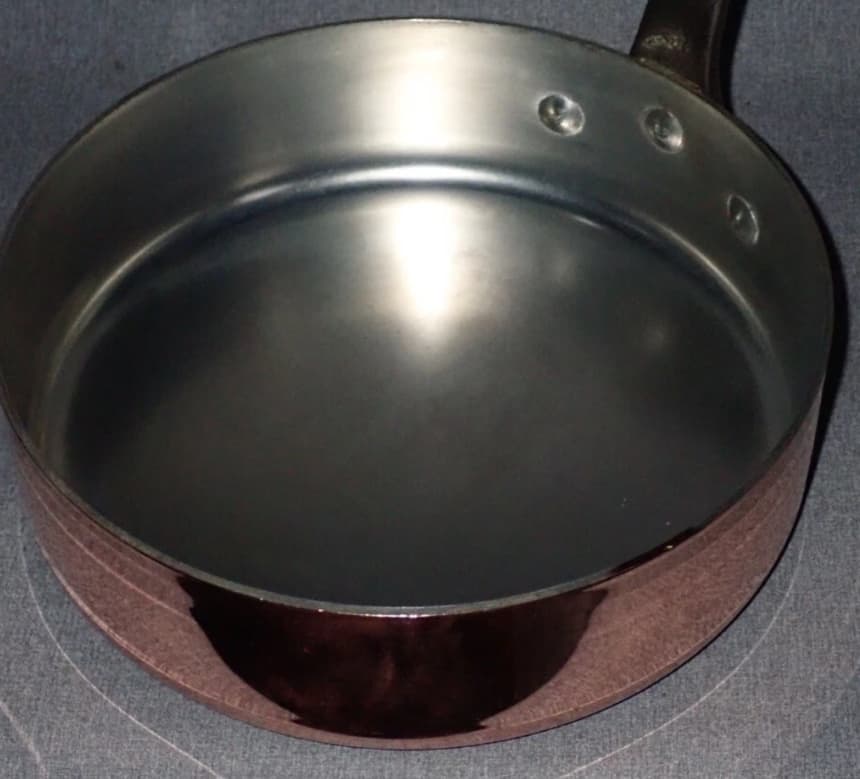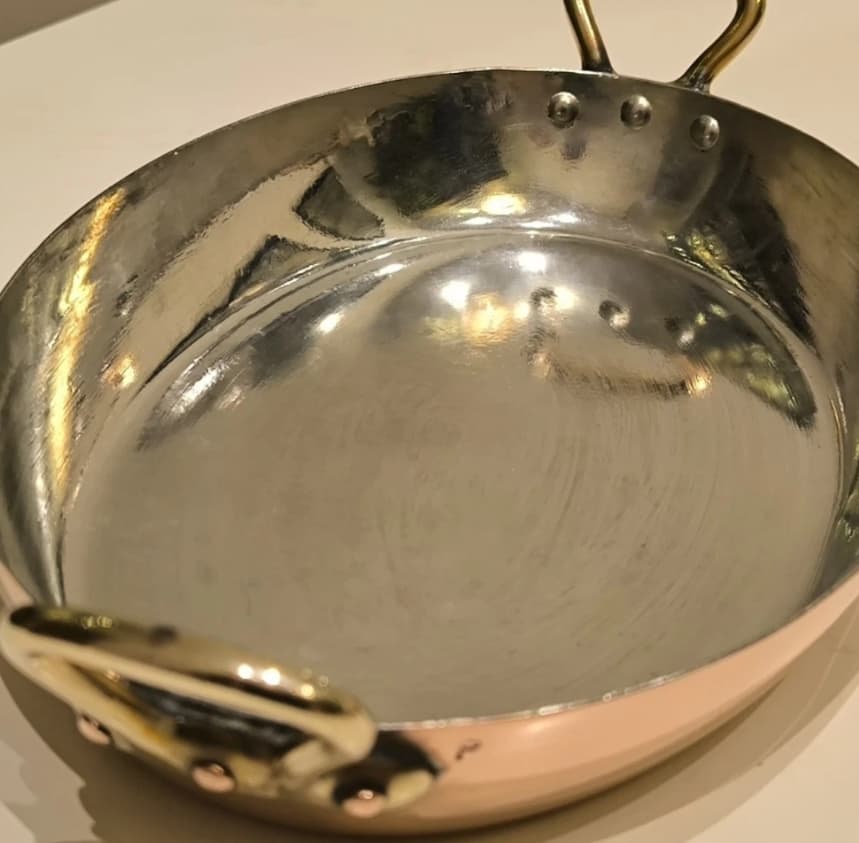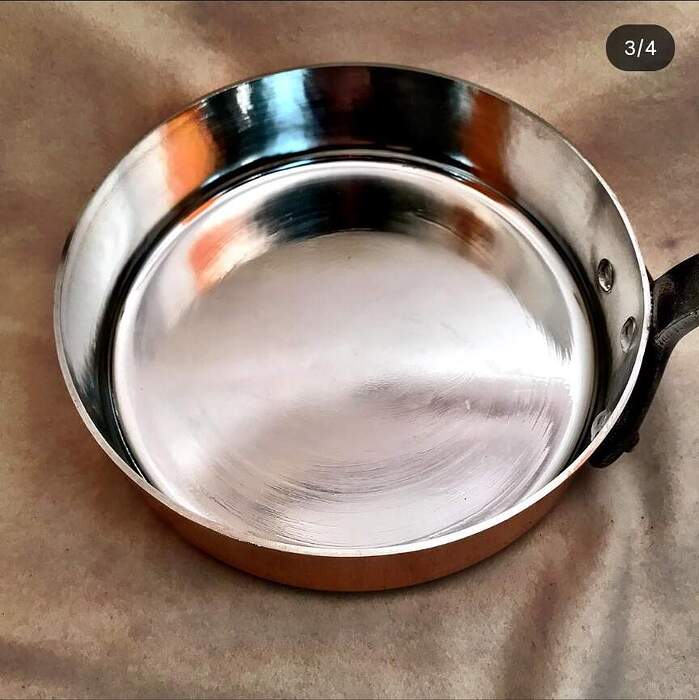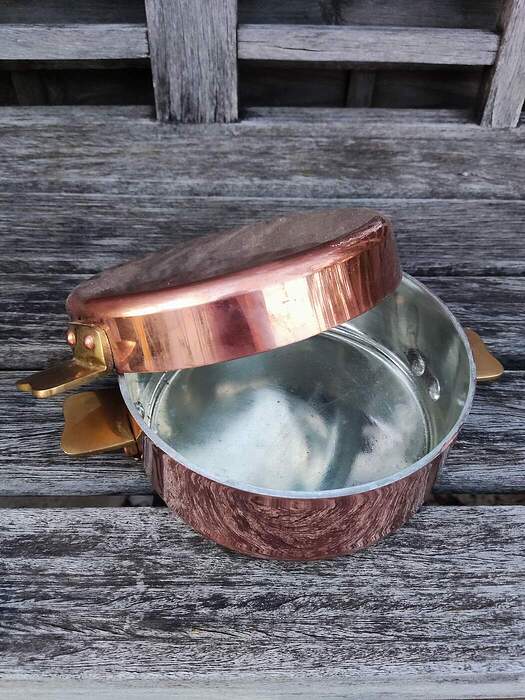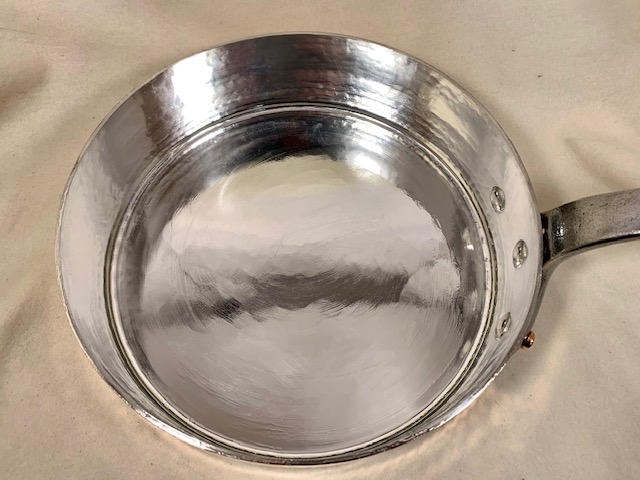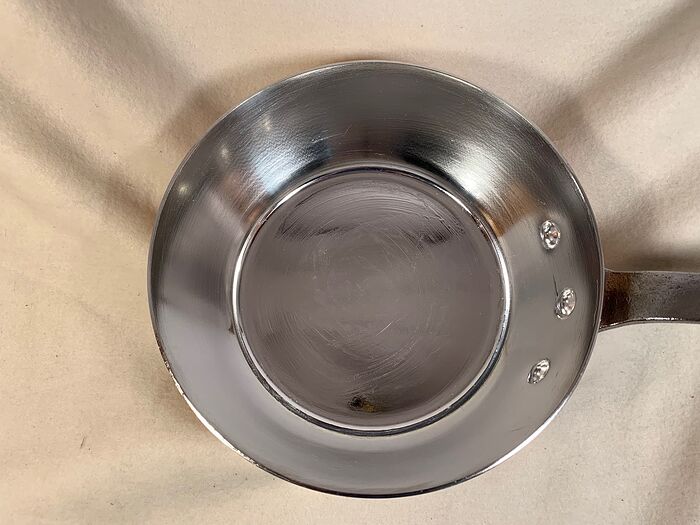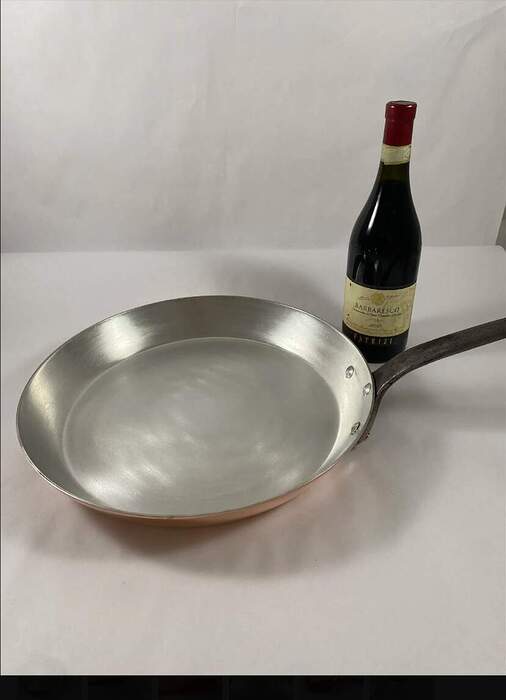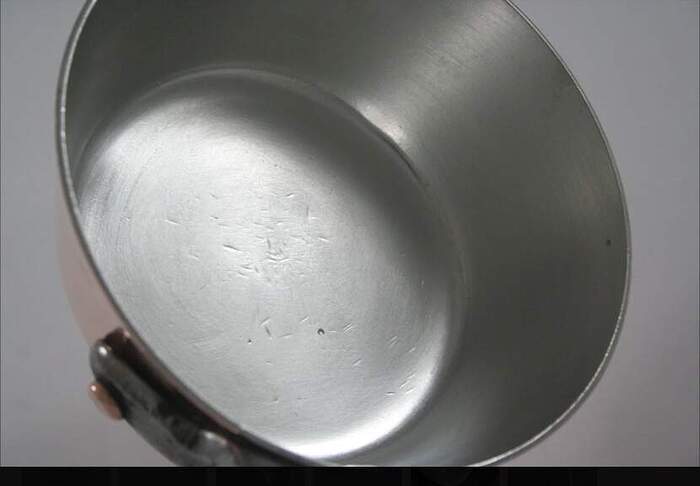I’ve known kitchens that would have new Mauviel retinned before the bottom ever saw heat, if they bought it at all. You are assuming that everybody finds retinning to be expensive, and thus wants as much tin on the copper as can be accommodated. This is an erroneous assumption.
I’ve seen two pro copper tinners live in action retinning pots I took them. I’ve studied videos of many pro copper tinners on line as part of my preparation to try it myself. There is a learning curve and it’s fine to say there’s an art to it. However, the difference between a decent hobbyist and a pro, in my humble opinion, is not such a vast chasm.
The exception is for pots that are large or unusually shaped where heat management and physical limitations come in to play.
The difference between a pro retinner and a hobbyist is the pro can apply it to spec for the user. You don’t get what the retinner thinks you should have. YOU are the culinary artist (whether home chef or professional; believe in yourself!) you should be given what you ask for, even if in the fullness of time you understand that maybe it wasn’t optimal. So what, don’t apologize. If you want to use copper you need to find somebody who can re-tin it the way you want it. Presumably you know more about cooking and the performance you want from your pan than the guy who is retinning it. If you don’t, I suggest studying your craft more diligently.
I couldn’t care less who is motivated to buy it or not buy it.
It is entirely reasonable for a top tier commercial kitchen using copper to be picky about its tin and to have incorporated frequent re-tinning in its cost of doing business. A whole lot more than exemplary cooks, a great chef, and top quality ingredients go into that tab. However, for a home cook using copper the story is usually quite different. They have bought a Lotus without being ready to buy new tires two or three times a year at $1000+ per tire. Actually those tire cost numbers are from the eighties when a client bank tried to make me a deal on a repossessed Lotus. Fortunately, under home cooking conditions, tin can last a long time. The home cook, lacking a stack of a dozen number 22 poeles, is far more concerned about turnaround time.
Agree. No professional kitchen that has made a business decision to use copper on a regular basis would ever dream of having the tin job dictated to it by the tinner (“tinker”). U .S. kitchens may have to compromise. European kitchens do not.
I’ve also retinned a few of my pans, and used the services of a few retinners. The difference between careful hobbyist tinning and the thick type done by Mauviel and the pro retinners who use the same style (which isn’t all of them, eg the most prominent American one doesn’t) is stark. The latter is much more durable. Have you ever heard of a hobbyist retinning job lasting more than a handful of years of heavy use, let alone the 2-4+ decades people are known to get out of original Villedieu tinning?
If you haven’t yet seen a significant gap in quality between amateurs and pros, its’s because the pro retinners you watched aren’t trying for thick tin, so their linings are comparable to those of competent hobbyists, which is to say they’re wiped evenly to the minimum natural tin thickness. Getting it uniformly thick seems to be far more difficult.
To show the difference, here’s a well done hobbyist retinning job: well-adhered tin all over, but just smooth, with little to no wiped texture. This is fine to use, but not especially durable.
Now compare with a close look at the thick retinning in this piece done by Atelier de Cuivre (Villedieu). Notice how every inch has heavy wipe marks that are either totally lacking or incidental in “flat” hobbyist tin? There is a clearly visible additional layer on top of the baseline.
Another example, the most prominent US retinner that does the thick “Villedieu” style wiped tin, is Rocky Mountain Retinning in Colorado.
The top one could pass for electroplating.
Gee, Charlie, have you changed your mind? I thought there were none. Hmmm, must be SS, or just for display.
Yes, people might not like to hear it, but having felt and watched how tin responds to wiping on copper, I expect the “flat” tin done by hobbyists and some pro retinners is functionally equivalent in service life to the Baumalu machine tinning. Maybe Baumalu’s is just slightly thinner because they seem to polish the interior after wiping, but otherwise it’s two methods aimed at the same result, ejecting all the excess material for a perfectly flat lining at the minimum wiped tin thickness.
Here’s another example I found of the thicker, more durable style of tinning, in a new old stock Villedieu pommes Anna posted on this forum. Zoom in to see the heavily wiped texture.
For a clearer view of the consistency/texture of heavy-duty “Villedieu-style” tinning in a restoration, again zoom in, Rocky Mountain Retinning:
And compare the above two to these showing the “flat” type of retinning done by a different US pro tinner recently:
I use a couple of pots for sauces, and one pan just because, that’s about it. I still own more than I should. One daughter, who is getting married this coming June, will get a lot of it. Still plenty left over.
I like tin thin, no wipe marks, as if it had been plated on.
Still use stainless day-to-day.
I would argue due to the chemical nature of tin and copper and the molecular bond it makes, it isn’t that hard to get it uniform lining without drips. That just requires lots of wiping and flux. Granted, there are other variables that determine how nice it looks (beyond just smoothness/uniformity). I have found a happy medium between some “wiping texture” and complete smoothness that still has that shine. It definitely takes practices and I tweak things almost weekly.
Since the tin quickly turns grey or mottled, shine is not a big deal to me.
Keep working at it.
I can assure you that accomplished tinsmiths/retinners pride themselves on smoothness of finish. Others are just justifying something less. One takes a lot of skill, the other, less skill. It’s that simple. Rough interior surfaces generally don’t do cookware, or cooking, a favor. Sometimes it matters less. Sometimes it matters more.
LOL. And yet, you regularly admonish and belittle anyone here who doesn’t worship your culinary proselytizing. Seems like you’re more interested in bullying than helping.
The heavily wiped finish done correctly like by all high quality makers is smooth, not rough. Flat, thin tinning is by far the easier way to do it, since you only need to continue wiping out the excess till it’s all gone so not much finesse or precision is needed. Every hobbyist tinner’s first acceptable result is thin and flat with little to no wipe marks. There’s no advantage to it over thick tinning as practiced by Mauviel in cooking, unless you want it to need frequent retinning for some exotic reason that you still haven’t explained.
We would cook directly on copper if it were safe. Tin adds nothing to the mix except safety. Nothing else at all. All that is needed is enough tin to make it safe. Anything more than that is simply superfluous. It doesn’t take much to make it safe. Are you able to follow the logic, here?
I am more than happy to leave retinning to others, but I do have certain specifications. I don’t make knives, I don’t make slotted spoons, I don’t make the mandoline I use. I use a lot of things in the kitchen I haven’t made myself. I bet you do, too. And, just because I don’t make them doesn’t mean they don’t have to meet certain requirements, again, I bet the same applies to you. Don’t let your fascination with tin leave you unable to reason. And, just because I didn’t make something most certainly doesn’t mean I don’t know how it’s supposed to work.
I’m sorry that the economics of retinning copper pots and pans isn’t something that particularly concern me. You seem to be disturbed by that. Well, don’t be. I can assure you that I’ve worked very hard in life to make things like this, and many others, something I don’t have to worry about. I would further assert that anybody buying copper who needs to hang on to every atom of the tin lining with dear life ought to re-think it. It’ not THAT magical. There are Michelin starred restaurants who’ve never served a dish made in tinned copper, or any other lining in copper for that matter.
Copper is great for hanging in the kitchen while other cookware is being used.
Especially if it is so thin you would be seriously flummoxed if you had to cook on it, has brass handles that will burn the wham out of your hands, and is lacquered to preserve its shine.
grew up with it in my home kitchen. We stopped using it many decades ago. It’s not essential.
